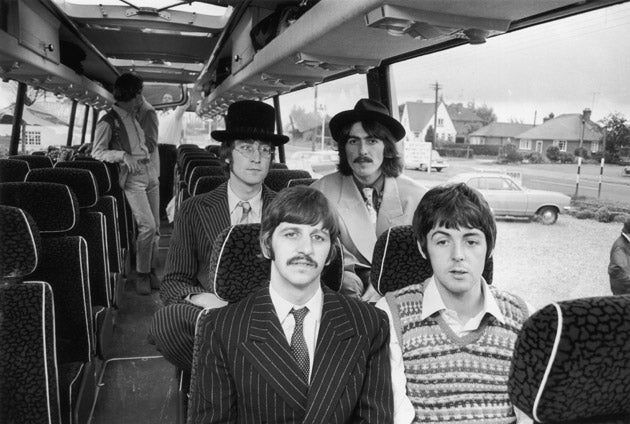Simon Calder: Can't remember the Sixties? You can still go there

One virtue of the 1960s: the dreadful term "staycation" was a good four decades from being coined. At the time, mind, the majority of Brits had no option but to holiday at home. Even though the package-holiday industry was expanding rapidly, the government did its utmost to keep us at home with a limit on overseas spending of just £50. So the best way to travel vicariously was to visit exotic locations in Britain that distilled the essence of Abroad and served it up to the passer-by.
The greatest concentration of such establishments was in Soho in central London, which also happened to be the hub of cultural revolution that swept upon Britain. That passionate era is celebrated at the National Portrait Gallery in an exhibition that opens on Wednesday: "Beatles to Bowie: the 60s exposed". It will no doubt attract many curious tourists from around the UK.
Some will be keen to tap into the energy that transported their parents – and Britain – from post-war gloom to post-modern enlightenment. Older visitors may hope that monochrome images of moody pop stars will revive memories of that decade – though, as they say about the Woodstock Festival, if you can remember it you weren't there. But if you can't remember Sixties London, don't fret: it's still there. In the course of half-a-mile along Brewer Street and its continuation, Old Compton Street, you can set the controls for the Sixties, and roll back the years to the time of rock.
Walking east along Brewer Street, you sense the human geography has barely changed in 40 years: the sex industry is barely concealed, drug culture is celebrated at Hemp Trading (number 17), and rock'n'roll journals predicting the imminent arrival of Elvis on British shores are on sale at the Vintage Magazine Co (number 39). There are more practical enterprises, such Romanys Ironmonger's (number 51) that, from the look of its windows, still charges in shillings and pence; and the Brewer Street car park, a shrine to motoring built on such a modest scale that you sense nothing bigger than a Mini would squeeze in.
To find yourself instantly translated to Italy, cross Berwick Street (nodding northwards to that absurd 1960s techno-monument, the BT Tower) and follow your nose into Lina Stores, a delicatessen that has long provided a seductive alternative to la dolce vita, a compendium of colour and scent that takes you straight to the land of plenty of olives (see pages 10-11) useful in the days when you couldn't get to Italy for the price of a decent salami.
Today Old Compton Street is, if I may, a good place for a gaycation. But there are still survivors from the days before homosexuality was invented. Gerry's Wines and Spirits (number 74) looks as though it should have a fine selection of British Sherries and Continental Lagers. Nudge a couple of doors north along Frith Street: Bar Italia is pure 1960s, save for plasma TVs showing Sky News. Focus instead on the faded Formica tops and black-and-white photos. And breathe... the aroma of the Near East at the Algerian Coffee Stores at 52 Old Compton Street, a useful proxy for a country still on the Foreign Office danger list.
At the east end of Old Compton Street, traverse Charing Cross Road to Macari's music store. There, in the window, in all their transistorised glory, is an array of Stylophones. Think of it as a primitive iPhone: you couldn't make calls, send emails or work out which way is north. But thanks to a metal stylus connected by a flimsy wire to a keyboard, you could tap out a tune on what was proclaimed as "the original pocket electronic organ". Time to travel back to the 21st century.
Travel's best years? A Sixties timeline
The 1960s comprised a decade of rapid changes in travel. In the first year alone, the first successful hi-jack of a US domestic flight to Havana took place, and the last steam trains ran on the London Underground. And besides that:
1960: O'Hare Field opened as in Chicago's main airport, and immediately became the busiest in the world – taking the title from Midway airport, in the same city.
1962: the first passenger hovercraft service began between the Wirral and Rhyl in North Wales.
1963: Dr Richard Beeching recommended closing 5,000 miles of railways in Britain, and one in three stations.
1965: a ferry first crossed to the Isle of Skye on a Sunday.
1968: the first Channel crossing by a car-carrying hovercraft.
1969: the Boeing 747 flew for the first time on 9 February, beating Concorde by three weeks. The Jumbo carried passengers from the following year; the supersonic jet entered service in 1976.
Subscribe to Independent Premium to bookmark this article
Want to bookmark your favourite articles and stories to read or reference later? Start your Independent Premium subscription today.

Join our commenting forum
Join thought-provoking conversations, follow other Independent readers and see their replies